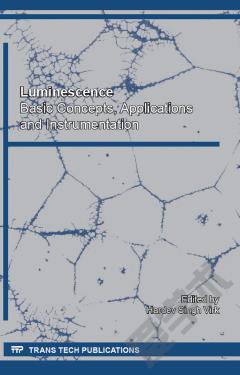Luminescence
The word luminescence was first used by a German physicist, Eilhardt Wiedemann, in 1888. He also classified luminescence into six kinds according to the method of excitation. No better basis of classification is available today. He recognized photoluminescence, thermoluminescence, electroluminescence, crystalloluminescence, triboluminescence, and chemiluminescence. The designations are obvious, characterized by the prefix. This Volume consists of 9 Chapters, including 8 Review Papers and one Case Study. The first two papers are based on OLEDs. Organic light emitting diodes (OLEDs) have been the focus of intense study since the late 1980s. Since that time, research has continued to demonstrate the potential of OLEDs as viable systems for displays and eco-friendly lighting applications. Thejokalyani and Sanjay Dhoble have given historical introduction to OLEDs in the first chapter under the title “Importance of Eco-friendly OLED Lighting”. They describe core fabrication technologies and applications of OLEDs in their paper. V. K. Chandra et al. have covered both theoretical and experimental aspects in their paper, “Organic Light - Emitting Diodes and their Applications” in the most rigorous way. This Chapter describes the salient features of OLEDs and discusses the applications of OLEDs in displays and solid state lighting devices.Organic-inorganic hybrid nanocomposite materials have been of great interest for their extraordinary performances. Interaction between the polymer matrix and nanocrystalline fillers produces wonderful features, viz.
{{comment.content}}








 京公网安备 11010802027623号
京公网安备 11010802027623号